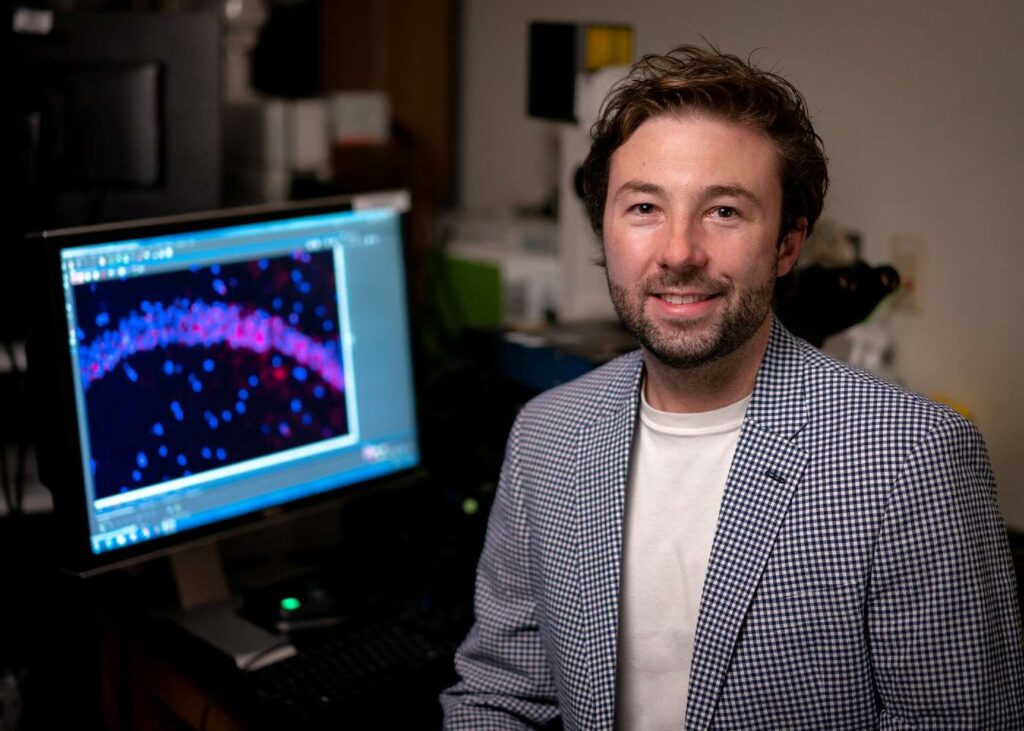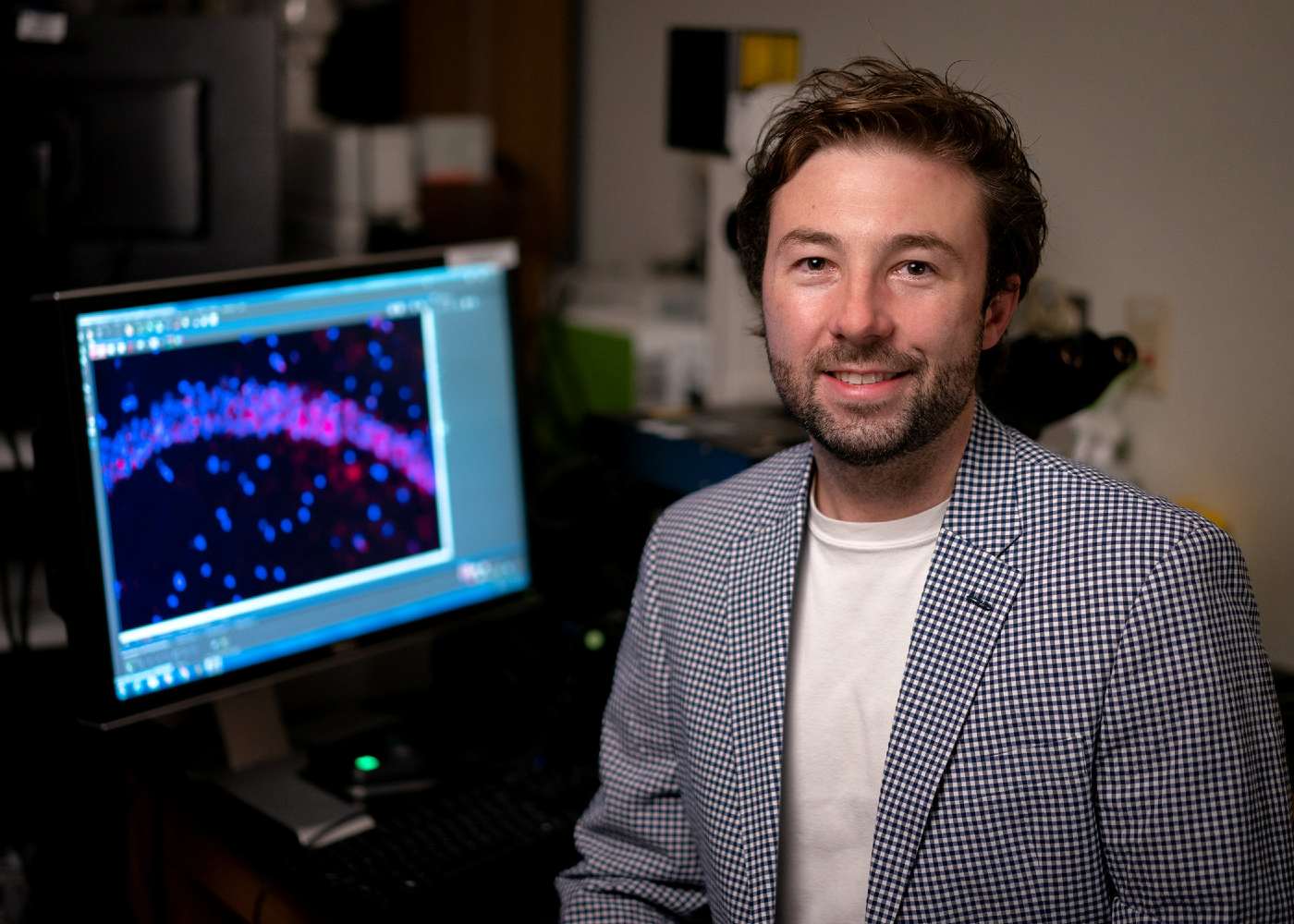A protein that may protect against Alzheimer’s disease has been discovered by scientists.
Experiments found the degenerative brain condition spreads more rapidly in the brains of mice genetically engineered to lack it.
Known as LANDO (LC3-associated endocytosis), the protective protein was found to be less abundant by half in brains with dementia. The findings, published in Science Advances, may lead to a potential therapy for the condition.
Senior author Dr. Douglas Green—an immunologist at St Jude Children’s Research Hospital, Memphis—said, “We learned about this pathway in the context of brain tumor research.
“But it has major implications for neuro-inflammatory and neuro-degenerative disease.
“We have shown [a] deficiency in LANDO, combined with aging, can lead to Alzheimer’s disease in a unique mouse model—and there is evidence suggesting this could also be the case in humans.”
Previous research by the same team found LANDO inside microglial cells, the primary immune cells of the brain and central nervous system.
When its genes were deleted, Alzheimer’s accelerated in lab rodents. The tests also found LANDO protects against neuro-inflammation, a hallmark of the disease.

It functions like a car wash to prevent the buildup of a toxic protein called beta-amyloid that kills neurons—causing memory loss and confusion, say the researchers.
The newly identified pathway could also yield strategies for unleashing the immune response against malignant brain tumors.
Further analysis has now identified a novel function of a protein known as ATG16L. It is vital for the recycling of cells during periods of stress, a process called autophagy. The investigators found if a region called the WD domain is deleted, LANDO is inhibited while autophagy continues.
RELATED: New Alzheimer’s Nasal Spray Shown to Reduce Proteins Which Cause the Disease in Mice
Most mice used in Alzheimer’s research rely on making genetic changes to recreate the disease. For this work, a new model with a specific deficiency of just the WD domain of ATG16L was created.
This means the rodents carry out autophagy normally but lack the LANDO pathway. By the time the mice are two-years-old, they exhibit symptoms and pathology that mimic human Alzheimer’s.
A First In Medical Research
This spontaneous age-associated model is the first to be made by deleting a single protein piece not previously associated with Alzheimer’s.
The researchers also analyzed human Alzheimer’s disease tissue samples, looking at the expression of proteins that regulate LANDO, including ATG16L. Expression of these proteins is decreased by more than fifty percent in people with Alzheimer’s.
MORE: Experimental Alzheimer’s Drug Stirs Hope After Early Trials Reduce Toxic Protein Clusters by 70%
Reducing neuroinflammation has been proposed as a potential medication. To treat their new mouse model, researchers used a compound that inhibits the ‘inflammasome’. This is a protein complex that activates pro-inflammatory immune reactions. The scientists targeted that responsible for neuro-inflammation in Alzheimer’s patients.
When the researchers profiled the behavior of the mice they identified improved cognition and memory, as well as less neuro-inflammation.
First author Dr. Bradlee Heckmann, also from St Jude, said, “This work solidifies LC3-associated endocytosis as a pathway that prevents inflammation and inflammatory protein production in the central nervous system.
RELATED: New Study Says Infrared Lasers Destroy Harmful Plaques in Alzheimer’s Brains
“Much of the data on LANDO suggests a significant role in neuro-inflammatory and neuro-degenerative diseases.
“There is also a strong possibility it could be targeted as a therapy against cancer or even infectious diseases that rely on similar processes for survival.”
SHARE The Hopeful News of an Alzheimer’s Breakthrough on Social Media…




















